In June the municipality of Telde celebrates the Fiestas Patronales in honour of San Juan Bautista (Saint John the Baptist), within the historic setting of San Juan.
One of the most traditional and popular fiestas of this area is the fiesta dedicated to water, La Fiesta de la Traída del Agua, held in August. For the last twenty five years or so this has been held in the area of Lomo Magullo, and here the locals welcome both residents and visitors with this elemental liquid, helping to relieve the heat of this summer month.
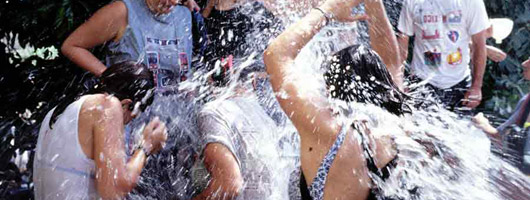
In September Telde celebrates la Bajada del Santísimo Cristo, a procession of a sixteenth century religious statue located in the high altar of the church of San Juan Bautista. This procession has a great following, and the statue is shown to the residents so it can be venerated by all the devotees of the saint. On this day it is a custom to pass a rose over the feet of the statue for protection from harm and illness.
During the same month there are also the Fiestas in Honour of Nuestra Señora del Carmen. The areas of the municipality with sailing traditions are decorated with flowers and there is a lot of merriment in order to pay homage to the Patron Saint of sailors. Because of its special beauty, the land and sea procession of the beach of Melenara is another highlight.
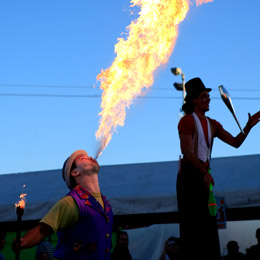
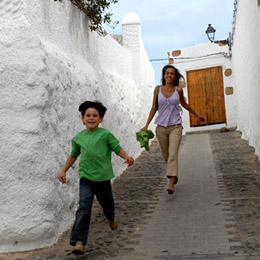
In October the Fiestas in Honour of San Francisco de Asís (Saint Francis of Assisi) are held in the unequalled artistic-historic centre of the area of San Francisco. A characteristic event of these fiestas is the preparation of the cape of Saint Francis, in which residents place their donations for the needy.
November brings the Fiestas in Honour of San Gregorio Tramaturgo, co-patron of the municipality of Telde, whose statue is carried in a procession through the streets of this part of the city. In one of the stages of the journey the statue is turned towards the fields and is made to bow three times in order to bless the rich fertile lands.
Five hundred years ago, Telde was the capital of one of the kingdoms into which the island of Gran Canaria was divided. There are still remains of the stone wall which marked the limits of the kingdom at certain points. This first urban centre, founded by Majorcan missionaries in the Lower Middle Ages, was the forerunner of the urban settlements with Hispanic roots which later emerged in Gran Canaria.
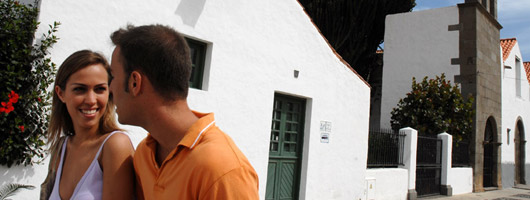
After the conquest of the island the land was divided up. Some of the conquistadors who benefited from this in the municipality of Telde were Alonso Rodríguez de Palenzuela (who did not take long to plant sugar cane and build sugar mills), Alonso de Matos and Cristóbal García del Castillo.
The initial sugar industry gave real impetus to the city. Beautiful mansions were built and important works of art were acquired. The origins of the city were located around the early church of San Juan Bautista (Saint John the Baptist) and the Plaza Mayor, the square in which the main civil and religious buildings of the municipality were situated.
Telde is the largest and most populated municipality of the eastern region of the island of Gran Canaria. It has a surface area of 100,2 square kilometres and is at an altitude of 130 metres.
To the north it borders with the municipality of Las Palmas de Gran Canaria and Santa Brígida; to the south, with Ingenio; to the west, with Valsequillo; and to the east with the Atlantic Ocean.
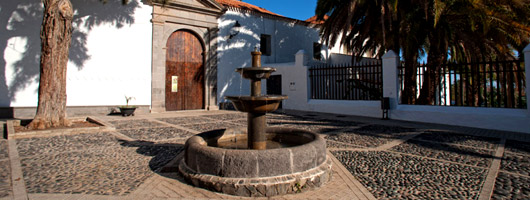
Within the area of the municipality there are three quite different zones: the coastal platform, the midlands and the peaks area, with a difference in altitude which can be more than 1,300 metres in only 15 kilometres.
The area has volcanic craters and a complex network of ravines and gorges.
In geological terms, the territory of Telde is characterised by the fact that it is an area rejuvenated by quaternary volcanic emissions of basaltic materials which flattened the surface area and smoothed the slope of the land towards the sea. The most important volcanoes, notable for their structure, are: Montaña de Las Palmas, Montaña de Cuatro Puertas and Montaña de Santidad. Another highlight is the volcanic area of Jinámar, of great geological and scenic importance, with several well-preserved volcanic craters.
Agriculture was the primary activity of the municipality of Telde until the twentieth century. The produce of this agricultural, commercial and irrigation sector (bananas and tomatoes), was oriented towards supplying the European markets. Today the agricultural sector is in obvious decline and is undergoing a process of transformation, with traditional crops being replaced by other crops grown in hothouses or on land where traditional systems of agriculture have been abandoned. The most important crops continue to be potatoes and corn, as well as other vegetables.
In the last two centuries several industries have been established in Telde to provide the materials necessary for the economic activities of the municipality, including industries related to the port, tourist and agricultural-livestock sectors.
Los Olivos Farm School
It’s time to banish the idea that milk comes from out of the fridge! At Los Olivos Ecological Farm School children come into direct contact with animals and natural resources from the primary sector. School visits, farm school, greenhouses, children’s play area and a whole lot more….